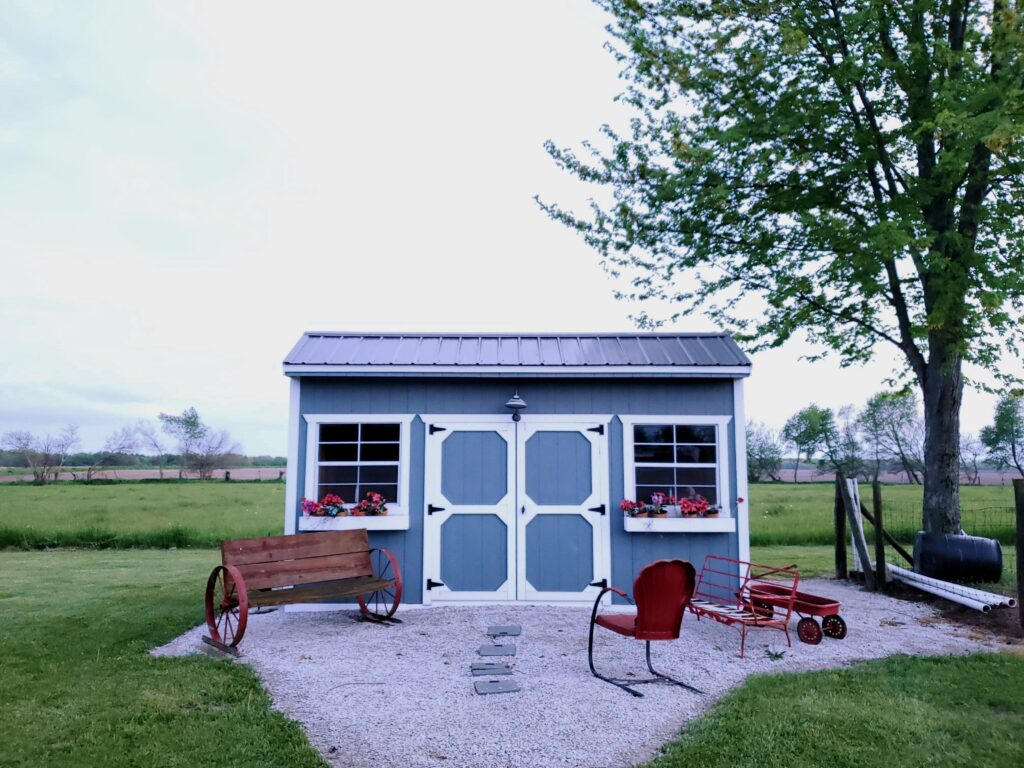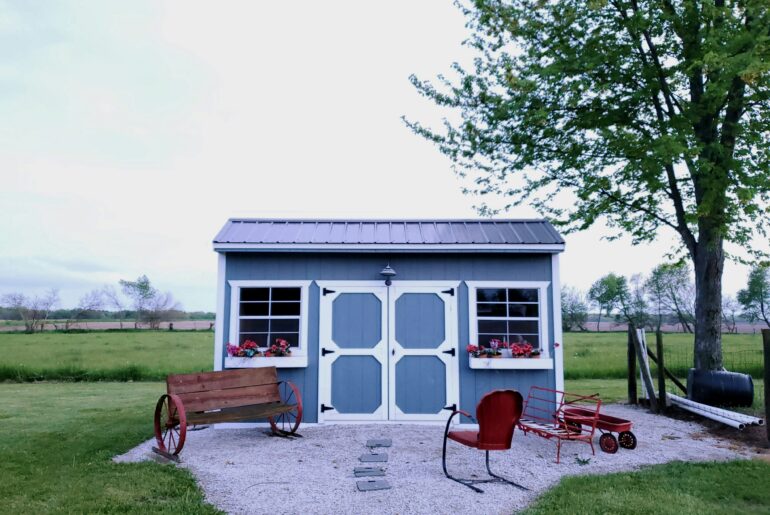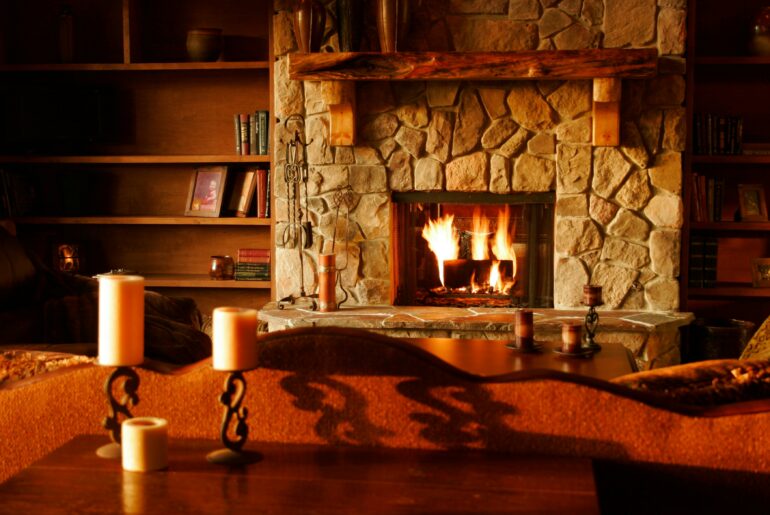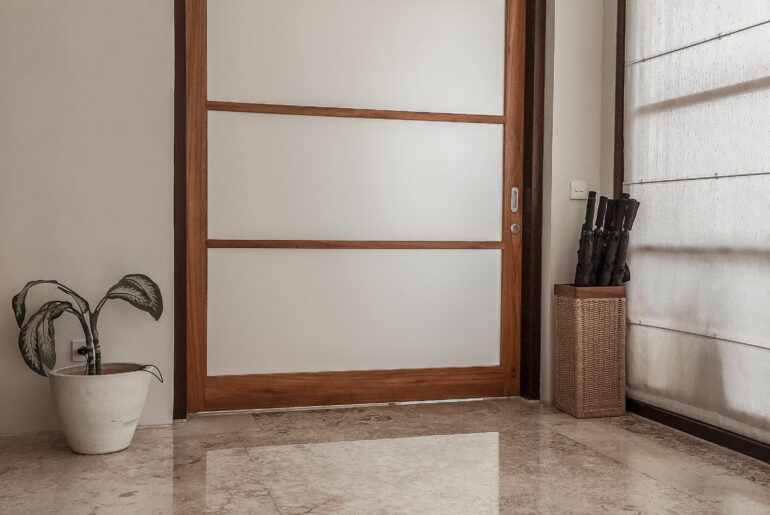Who doesn’t love a shed? Call it a workshop, a man-cave, or she-shed, they are great places to get well away from the everyday and get lost in a hobby.
It would be great if we could use them all year round too, right? Uninsulated sheds get very hot in the summer, and impossibly cold in winter, so insulating is essential when it comes to making this space more usable.
Maintaining a reasonable temperature all year round is a good idea even if you are simply using a shed for storage. Installing insulation will help protect your belongings from extremes.
Here’s how to insulate your shed without spending out.
1. Cardboard Packing Boxes
Possibly the cheapest option, and the least durable. Corrugated cardboard is filled with air gaps, packed tightly together between rafters and wall studs; it can produce a competent insulating effect. Not recommended for humid, maritime, or wet climate conditions as corrugated cardboard will warp, break, and rot.
Its best feature is that you could pick up enough corrugated cardboard for free from a supermarket or other business. It is also lightweight and easy to cut to fit and will adhere with most glues to most surfaces.
Corrugated cardboard is liable to burn, so it might be wise to paint it with a proprietary coating or cover it with a barrier foil. It might surprise you to learn that cardboard has an R-value of 3.5, which is not too shabby, as long as the packing boxes are in good condition.
2. Clay-slip Packed Straw
Straw is a terrific insulator. Not hay! Hay is great bedding material for your pet rabbit or guinea pig, but bugs love it too. Clay-slip straw packed tight and covered in plaster or sheetrock is as pest repelling and fire-retardant as many modern insulating materials.
Finding a commercially available product as convenient as those on sale at the hardware store is likely still a little way off, which means a trip to a farm for some $5 bales of straw. It’s a lot of work for an R-value of approximately 1.45-1.7 per inch, but if you are inclined to be all natural and carbon sequestering then it might be the way to go?
Experts tell us that buildings that use straw as a construction and insulation material have lasted up to 9,000 years, which, they claim, makes it a very robust material, resistant to termites, water, and mold. How long will you need to be using your shed?
3. Reflective Foil on a Roll
This is essentially bubblewrap coated with a layer of metal foil and can be simply stapled onto the timber wall studs and sheathing of your shed. It’s best used as a radiant barrier as it will reflect the heat of the day back out through the roof and wall structure. If it is a single-faced foil remember to install the reflective face away from the shed interior.
This is a good, cheap choice for sheds that get a lot of exposure to the sun, say in warmer climate zones in the southern states. In the north it will be less effective, and it won’t keep out those arctic drafts come winter.
There are multifoil versions that boast many layers and higher R-values, and can be far more effective, but the price rises to a point where the shed upgrade could become an overspend.
4. Expanded Polystyrene Foam Board
Polystyrene is the least expensive insulation you can buy per square foot, which makes it a top contender when you need to spend as little as possible and still achieve a reasonable result. It is true to say that you may need more than other foam boards when it comes to thickness, but if space is not an issue then this should not be a problem.
It is still a step up from reflective foil, and much more practical than fiberglass if you are not planning on boarding out your shed. However, polystyrene insulation foam boards can be vulnerable to breakage, impact damage, and if you will be using naked flames, it will need protection from ignition.
Despite being treated against pests, mice and other small rodents also seem to really like polystyrene. This is not so much of an issue in a home setting that is well used and inhabited, but in a shed used for storage it could be open to attack.
5. Fiberglass
Fiberglass is the standard level of insulation used almost everywhere, but is it any good in a shed? The difficulty with fiberglass is working out how to install it. You don’t want to crush it as it will lose its effectiveness, but it’s not a product that you can easily mechanically fix. It will need to sit inside a framework, perhaps metal studs, as shed walls can be quite thin.
If you are planning on using drywall or OSB to line the walls and roof then fiberglass is a good, cheap and available insulator, but make sure you spend the money saved on a great set of PPE. Fiberglass can irritate your respiratory system and skin if the tiny fibers are breathed in or get on your hands so a mask and gloves are essential.
Another thing to consider is that fiberglass does not hold up so well against the elements, which means that if your shed is in an area of high humidity, is in a maritime setting, or perhaps you get a lot of snow, then it might not be for you. Fiberglass and moisture don’t mix; it could become a breeding ground for mold and mildew.
6. Mineral Wool
Mineral wool is a step up from fiberglass in that it is much more resistant to moisture, mold and mildew and has very good fire resistance. Unfaced mineral wool is inexpensive but would benefit from being boarded in to prevent damage.
The batts are rated for domestic walling and can be fitted between six-inch wall studs, but timber shed wall studs are usually much thinner. Mineral wool can usually be split to fit a narrower wall space, making a single pack go much further. A metal shed would require framing out, adding to the cost of insulating with mineral wool.
With an R-value of almost 4.2 per inch it will certainly make a noticeable difference. Another advantage is that mineral wool has a high sound deadening rating. However, if you are cutting or splitting mineral wool make sure to buy a good respiratory mask to protect your lungs from the tiny fibers that will be released.
7. Extruded Polystyrene and Polyiso Foam Board
An inch of extruded polystyrene foam board (AKA Styrofoam) delivers a slightly greater R-value than its expanded cousin and is much more resilient. Polyiso also has a higher R-rating, but is the most expensive foam board, however it might be worth checking local listings for private sales of over-bought boards.
Glue these boards directly onto the roof sheathing or the walls on the inside of the shed and on a hot day you will very quickly feel the difference.
Like all foam boards it pays to ensure a seal around the edges to keep out bugs and prevent gaps from letting hot or cold air sneak its way in or out. Styrofoam and polyiso both perform well in moist conditions, so could be a good choice for a maritime or other humid climate.
Each manufacturer produces their own version of Styrofoam in their own signature color, the three big players going for pink, green and blue. If you are planning to leave the insulation exposed in the shed, then this could be an opportunity to have some fun.
8. Spray Foam Kits and Single Cans
But wait just a minute. Spray foam isn’t cheap, so why is it on this list? It depends, really, on what the end use of the shed, or outbuilding you want to insulate, is. If you are storing high-value items, perhaps a classic car, or if you want to convert it into a home-cinema or gaming space then it might be the right choice.
Closed cell spray foam insulation acts as a moisture and air barrier and can expand into all the tiny cracks and spaces that other insulation products can’t reach. It also delivers a high R-value which means you lose little space in your workshop or shed.
Spray foam will adhere to timber sheathing or profiled sheet metal paneling too, making it a versatile performer. Closed cell spray foam is also pretty tough when it has completely cured and won’t damage easily.
Open cell spray foam works differently in that it is more vulnerable to crushing and to moisture, although it can air seal a space well, and is great for noise absorption. Also, it is always a good idea to check the manufacturer’s guidelines carefully as some older spray foam recipes don’t go well with aluminum.
If you are on a tight budget, remember that a can of spray foam is not expensive and is a great insulator to use alongside other products, such as foam board, sealing joins, corners, and cuts. Use a can of spray foam to close up those tricky angles between the roof and the walls.
A low rise door and window spray foam could be used to fill around the door frames and windows, where the gaps are too large for caulk, but too small to squeeze in foam board, batt, or another insulator. Teamed with wire wool, spray foam is terrific at deterring rodents too.





